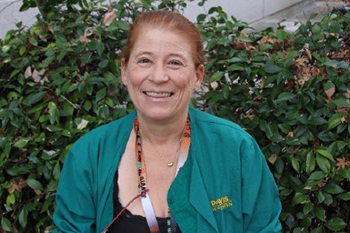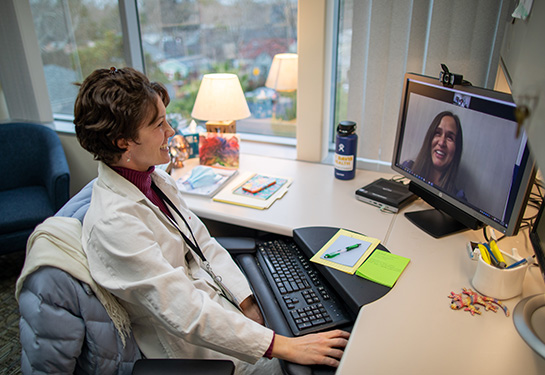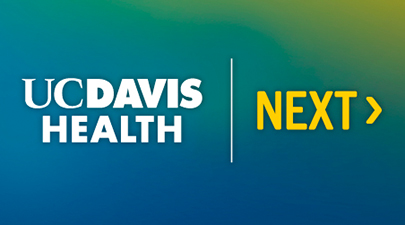Through a team effort, UC Davis Health employee quits tobacco addiction
For tobacco users, quitting is like training for an Olympic event. The process involves enormous physical and emotional demands, determination, heartbreak, commitment and most importantly, a well-rounded support team. Fortunately, for UC Davis Health patients, there is such a team to support patients on their journey to quit tobacco.

The department of Health Management and Education (HME) serves as the hub for all quit tobacco services for patients. “One of the best assets of the program is their staff,” said Michelle Bauer, a UC Davis Health physical therapist – and most recently, a former smoker. “They are super friendly, helpful and make quitting less scary.”
And quitting is scary. CDC statistics compare tobacco addiction similar to that of heroin and cocaine addiction.
“It’s a much more significant challenge than many realize,” said John C. Luke, Bauer’s physician. “Stopping tobacco use is the best thing patients can do for their overall health. I relish sharing my patients’ success – which can happen at any age.”
Once an individual is referred to the program, HME team members assess patient readiness as they conduct outreach via phone calls, MyUCDavisHealth chart messages, and letters. Tobacco treatment specialists and health educators within the department provide a touchpoint for patients every step of the way from making the initial call, to follow up engagements and class presentations. The team of administrative staff ensure patients connect with the right program and troubleshoot everything from class materials to tech issues during virtual classes.
Learn more
Watch a Facebook Live conversation (recorded Aug. 11), featuring Cari Shulkin, a nationally certified tobacco treatment specialist, and patient Denise Caldwell, who shared her story of how quitting required a total team effort.
Health Management and Education offers SToP (a Quit Tobacco eight-week series); Strategies to Quit Workshop; Smoke Free Support group; Individual counseling; and a referral to the California Smokers’ Healthline. For more information, you can visit the webpage. For information on how to order brochures or use our class order panel to send a referral from the EMR, visit the “For Providers” page.
Also, download and share this flyer (PDF), showcasing HME’s one-stop hub for tobacco cessation services and resources.
“In addition to enrolling individuals in our classes, we also refer to the California Smokers’ Helpline,” said Cari Shulkin, a nationally certified tobacco treatment specialist.
“Our mantra is ‘no blame, no shame’ when it comes to talking about quitting tobacco,” she continued. “Effective coaching and medications are important tools we use throughout the process.”
“I used Chantix and lozenges to help quit,” Bauer said. “Initially the Chantix made me ill and gave me the strangest dreams, but the nurses helped me adjust how much and when to use it.”
A frequent guest speaker to the SToP Tobacco class series, pharmacist Sarah Cummins, said that it’s important to select the medication that best fits each person’s unique needs. “There are a lot of products available and each one has its nuances – we love being part of each patient’s journey to quit,” she said.
Psychologist Debra Fishman, another integral Quit Tobacco program educator, helps tobacco users understand how nicotine triggers brain receptors to produce feelings of pleasure, stress relief, and other positive feelings. “Once individuals understand this, it creates an ‘Aha’ moment!” she explained. “They begin to see that their urges are responses to a chemical reaction that can be managed.”
Nutrition is another important topic shared among those quitting tobacco, and the team features a registered dietitian to address weight gain. “Providing information about why weight gain occurs and how to prevent it after tobacco cessation is one more way to help individuals stay quit,” said dietitian Marie Barone.
The program prepares patients emotionally, cognitively, and physically for a scheduled “Quit Date.” “Quit dates can be riddled with self-doubt, anxiety, and unrealistic expectations,” explained Shulkin. “Studies reveal that it can take up to 12 quit attempts to be successful. You learn something about your relationship with nicotine each time you quit.”
“Despite all of the preparation – I wasn’t sure if I could quit,” Bauer said. “I remember Cari warning me that taking one puff is the start down a very slippery slope. I was not about to let cigarettes take over my life again.”
“Quitting smoking is one of the hardest things I have ever done. It is really true,” Bauer continued. “That first cigarette may be a choice but after that if you continue you are setting yourself up for a huge fight to quit. It can be done – we have really supportive people to help you through the process, but you have to be ready to do the hard work and help yourself. It is so rewarding – and I like myself so much more as a non-smoker.”





